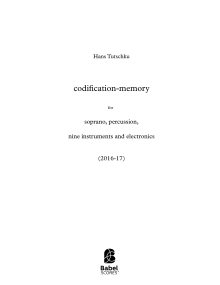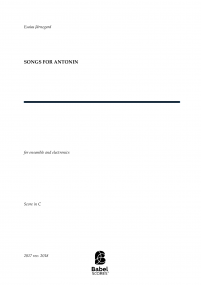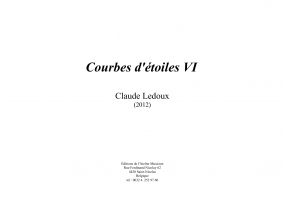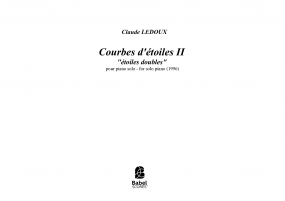Sketches for a Postcard to Sirius
ISMN : 979-0-2325-3998-0
- Login to create your own lists
"Sketches for a Postcard to Sirius" is a commission from Jennifer Hymer and Bernhard Fograscher. As we just had performed Stockhausen’s Mantra together, surely one of the most important works for two pianos and electronics, I had the idea that my piece is like sketches for a postcard to Karlheinz Stockhausen (to be sent to Sirius obviously). My composition consists of four studies.
I. Sinfonia. Vorspann
A study about the letters of title of the piece translated into rhythms and mouvement in space. A bit like the introduction a film showing title and credits.
II. Chorus. Studies in Ancient Harmony
A study about different aspects of microtonal harmony that treats the live parts on the ordinarily tuned pianos electronically to move to new microtonal piano worlds. Different forms of pure harmonic and stretched or compressed spectra. Complex glissandi which arrive at chords in just intonation and leave them again making the gravitational force of just intonation chords audible. Beatings and dirty harmonies. All this will be explored in this part of the piece.
III. Sirius-Schaukel. Lachenmann ist auch dabei
The third study plays with synchronous/asynchronous situations: There are simple rhythmical situations where both players play in the same pulse, then they might go out of sync; after that will slowly synchronise again to reach a new stable situation and so on. Harmonically this section is about filtering processes. Silently depressed keys and the piano pedals are used to filter out different components out of clusters. The computer listens to those filtered sounds and invents another layer of simple or transformed echos based on the live parts. Some sort of sirius swing, so to say – certainly Lachenmann sitting on the other seat of the swing...
The last study is a microtonal Boogie Woogie where the two pianos and the electronics work together in a complex hoquetus structure. Only the combination of the three makes the lines and gestures of this wonky Boogie audible. The computer generates his contribution live by playing bits of the live parts following a very strict electronic scor
Pages - 34










